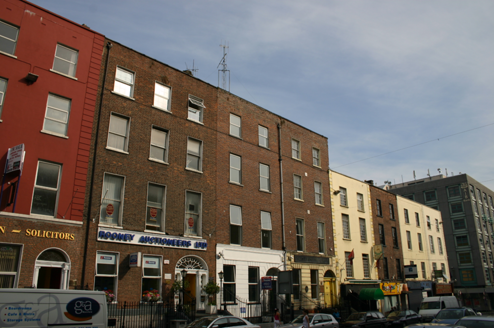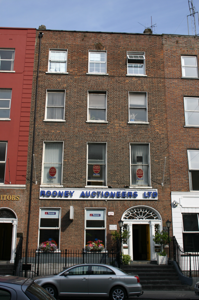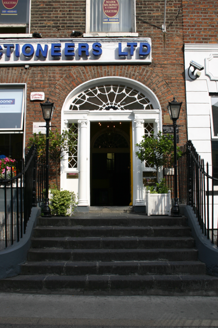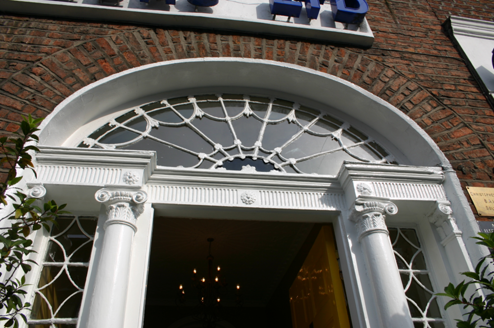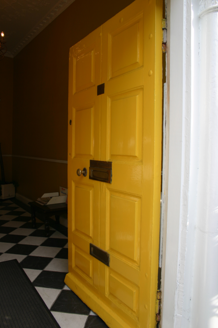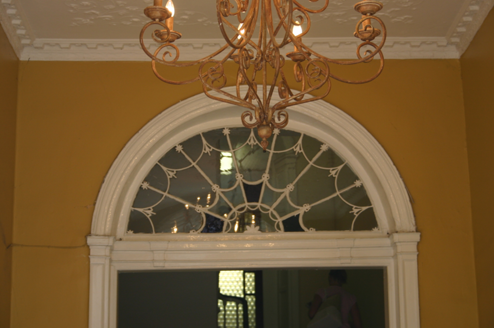Survey Data
Reg No
21517047
Rating
Regional
Categories of Special Interest
Architectural, Artistic
Previous Name
Limerick Institution
Original Use
House
Historical Use
Gentlemens club
In Use As
Office
Date
1800 - 1820
Coordinates
157452, 156839
Date Recorded
13/07/2005
Date Updated
--/--/--
Description
Terraced three-bay four-storey over basement brick former townhouse, built c. 1810, with a front railed basement area and an apsidal-ended two-storey return. Historically in use as a club with library and newsroom. Pitched roof hidden behind parapet wall with a shared rendered chimneystacks to both party walls. Red brick walls laid in Flemish bond with cement pointing, with limestone coping to parapet wall and plastic rainwater goods. Painted limestone plinth course below ground floor with squared and coursed ashlar limestone walls to basement elevation. Rendered to rear. Brick flat-arched window openings with patent rendered reveals, painted limestone sills and one-over-one timber sash windows to first and second floors. Replacement uPVC windows to ground floor, third floor and to rear elevation. Brick three-point arched door opening with original timber-panelled door. Door flanked by a pair of engaged timber Ionic columns, original sidelights and quarter Ionic piers, all supporting a stepped entablature with decorative webbed zinc fanlight above (some historic glass). Door opens onto limestone step and limestone platform with six limestone steps flanked by wrought-iron railings and cast-iron posts on limestone plinth enclosing basement area. An iron gate and steps gives access to the basement level. Square iron coal-hole cover in a cut limestone surround extending to the limestone kerb. Intact joinery and classical plaster ceiling to entrance hall with a further webbed fanlight and intact staircase.
Appraisal
This building has considerable street presence due to its original doorcase and the curved elevated approach. While the signage detracts from its character, the building appears to have a relatively intact interior and makes a positive contribution to this important city centre streetscape. It is further significant as the home of the Limerick Institute in the mid nineteenth century. The Limerick Institute was a club for the wealthy, which contained a newsroom and a library.
